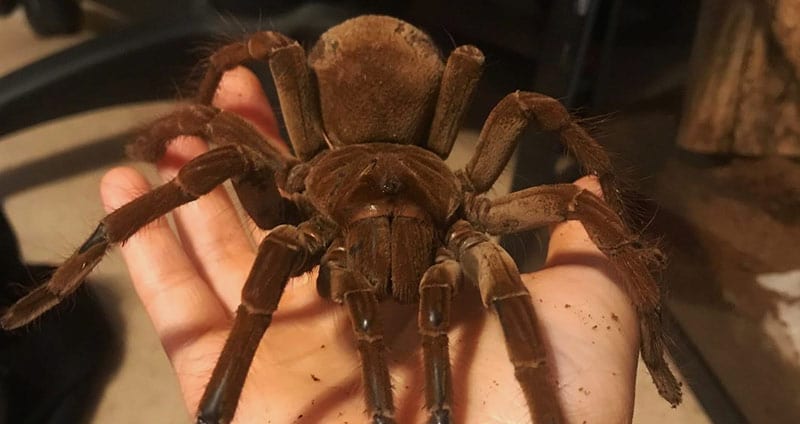Spiders come in all sorts of shapes and sizes, ranging from microscopic to downright massive.
Because of this, a spider’s weight varies by quite a bit. Some are light enough to get carried away by a slight breeze, and others have a decent amount of heft to them.
Whether you’re conducting scientific research or you’re just curious, we’ve compiled a list of spider weights that should give you a good idea how heavy these creatures are.
Table of Contents
How Much Does a Spider Weigh?
A spider can weigh as little as or less than .1 mg (Patu digua) or as heavy as 175 g (Theraphosa blondi).
More specifically, many smaller spider species weigh between 1 mg and 10 mg, while common house spiders range from 10 mg all the way up to 1 g or more.
Larger spider species, namely tarantulas, mostly weigh between 30 g and 100 g, with some exceptions existing on both ends of the spectrum.
13 Examples of Spider Weights
Below are 13 prominent spiders or families of spiders and their average measured weights. Many of these spiders listed here are broad and can contain hundreds or even thousands of individual species.
Therefore, these numbers can vary widely. With over 35,000 named species of spiders in existence today, generalization is essential in calculating the weights of spiders.
Regardless, these measurements are quite accurate, variations at the microgram level are totally indistinguishable without proper equipment.
| Spider Name | Weight |
|---|---|
| Dwarf Spider | 1.4 mg |
| Ground Spider | 2 mg |
| Orb Weaver Spider | 3 mg |
| Tangle Web Spider | 3.6 mg |
| Sac Spider | 3.8 mg |
| Crab Spider | 6.1 mg |
| Wolf Spider | 8.1 mg |
| Running Crab Spider | 8.6 mg |
| Jumping Spider | 10.7 mg |
| Brown Recluse | .75 g |
| Black Widow | 1 g |
| Pink Toe Tarantula | 35 g |
| Goliath Birdeater | 175 g |
What Determines a Spider’s Weight?
While it’s obvious that each genus or species of spider weighs a different amount, their weights can fluctuate between individual specimens of the same spider species.
So, what exactly plays into the weight of a spider and creates variations between and within species?
Type of Spider
First and foremost, the type of spider plays a huge role in its weight. Not only are some spiders much smaller/larger than others, but they also vary widely in density!
Each species of spider that exists today has perfectly adapted to their natural environment. For some species, this involves them being extremely small and light. For others, it involves being as large and threatening as possible.
Essentially, they’re sized differently in order to properly hunt their target prey, hide or defend themselves from predators, and generally survive the wilderness.
Male or Female
While there are exceptions, female spiders tend to be larger than their male counterparts. This size discrepancy varies from very slight to extremely significant, so weights can vary greately as well.
It’s assumed that males are smaller because they can more easily traverse thin strands of silk, while females are larger because they can reproduce more abundantly.
Stage of Life
Spiders start out extremely small compared to their fully-grown size — largely because they’re born along with dozens or hundreds of other spiders!
Thus, as you can imagine, young spiders or spiderlings weigh significantly less than adults. In fact, some spiderlings weigh so little that they do something called ballooning to travel via wind.
Sources
- americanarachnology.org
- nationalgeographic.com
- bugzoutllc.com

